The Fascinating & Superstitious Fairy Trees in Ireland
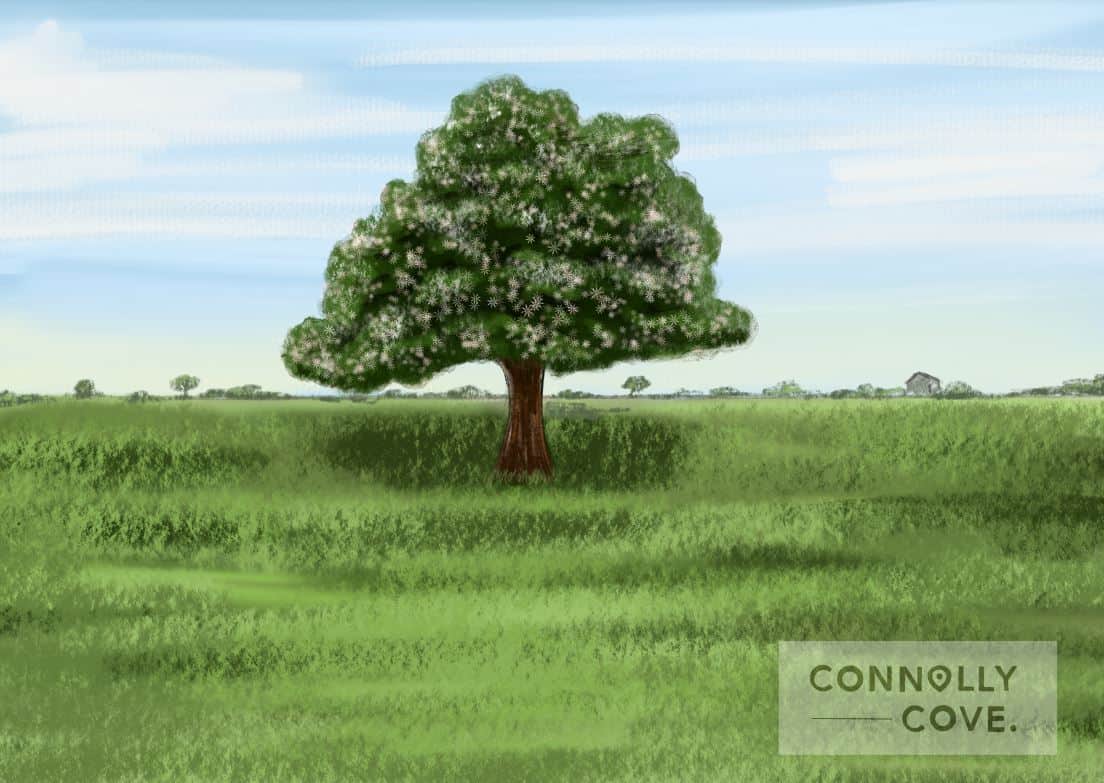
Updated On: April 21, 2024 by Ciaran Connolly
Ireland has always been a place filled with fascinating folklore and stories. One intriguing piece of our folklore involves the mystical Irish Fairy Trees. All around Ireland, fairy trees are believed to be home to magical creatures.
There is so much to uncover about Fairy trees, from their history to their superstitions to the locations in Ireland where you can visit them. Keep reading to find out more about Fairy Trees in Ireland…
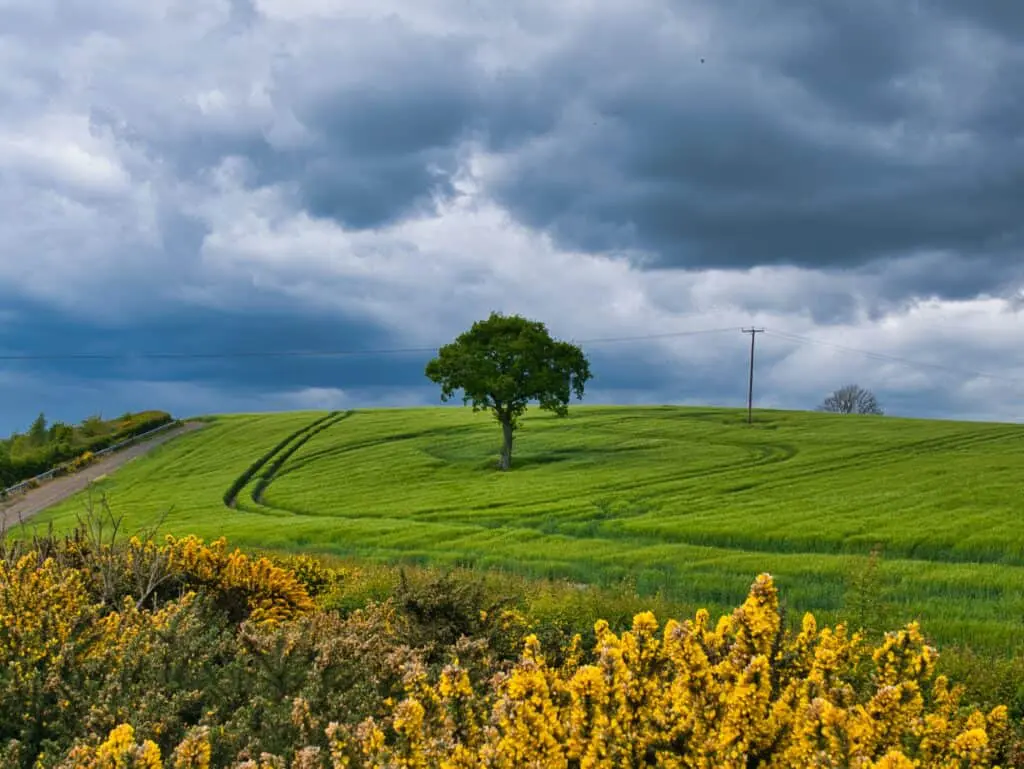
Here is a quick breakdown of our article; simply click on a heading to skip ahead!
Table of Contents
What are Fairy Trees?
You may be wondering, ‘What is a fairy tree?’ Fairy trees in Ireland are associated with fairies, known as Hawthorn or Ash trees. The thing that makes these Irish Fairy trees different from other trees is their location. As we will soon explain, not all Hawthorn or Ash trees are fairy trees.
The Fairy tree is usually found alone in the middle of a field or on the side of a road. The trees can be easy to see if you know what you want. You will also find Fairy trees at ancient sites or holy wells around Ireland.
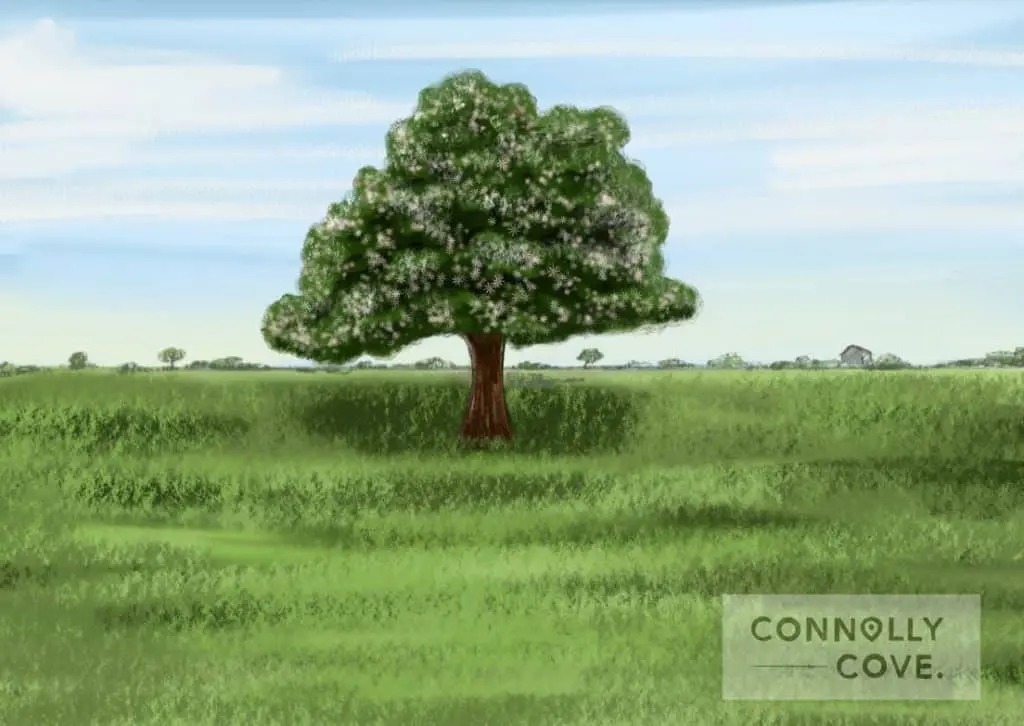
Fairy trees are by no means rare in rural Ireland; every small village has a few fairy trees, and most farmers have at least one on their land.
The hawthorn tree is best described as a small, bushy tree that can grow up to six metres high and live to an impressive four hundred years old. It is considered a sacred meeting place for the fairies, and cutting down a lone hawthorn fairy tree is avoided at all costs.
The Fairy trees are believed to bring luck and prosperity to the landowners where they grow. Many people who visit the fairy trees leave prayers, gifts, and personal items as tokens of good gesture in the hopes of receiving good fortune or healing from the ‘wee folk’.
You might be wondering how the hawthorn tree became known as a faerie tree. Why did this tree, in particular, become identified with fairies? The most likely reason is that the tree blooms in Spring and used to be associated with the festival of Beltane. This was an essential time for the ancient Irish and the Sidhe (The fairy people who appear in Irish mythology).
Beltane is referenced throughout some of the earliest Irish literature and is associated with important events in Irish mythology.
What are Faries in Irish Mythology?
In Irish folklore and mythology, fairies, often referred to as “the Good People” or “the Sidhe” (pronounced shee), are supernatural beings. These mystical entities are prominent in Irish imagination and have been a source of fascination and intrigue for centuries.
Fairies are believed to inhabit the otherworldly realms, hidden from the human eye, and their portrayal varies from enchanting and benevolent to mischievous and evil.
One of the critical characteristics of Irish fairies is their association with the natural world. They are often thought to dwell in sacred places such as ancient mounds, hills, and fairy trees. These locations are believed to be portals to the fairy realm, where these ethereal beings conduct their affairs.
Irish mythology is rich with stories of mortals stumbling upon these enchanted sites, only to find themselves trapped in the world of the fairies, where time flows differently and the ordinary rules of reality do not apply.
The appearance of fairies in Celtic folklore is diverse and multifaceted. While they are often depicted as small and delicate beings with otherworldly beauty, their appearance can also be deceptive. Some tales describe them as ethereal and radiant, while others portray them as grotesque and menacing.
Fairies are often said to possess magical powers and can bestow blessings or curses upon humans. They are known to engage in both benevolent and generous acts, depending on their mood and the actions of humans.
Despite their enigmatic nature, fairies hold a special place in the hearts of the Irish people. They are revered and respected, and many customs and traditions are associated with appeasing or seeking the favour of the fairies.
Offerings of milk, butter, or other gifts are left out for them, and certain days of the year, like May Day or Halloween, are considered especially significant for encounters with these supernatural beings. The intricate tapestry of Irish folklore and mythology continues to weave the tales of fairies, keeping their presence alive in the collective imagination of Ireland and beyond.
Also called the “wee folk,” it was once believed that the magical creatures didn’t like being referred to as fairies. Even today, in Ireland, the Irish Fairy trees are associated with a lot of superstition. While many Irish people no longer believe in fairies, they still avoid disturbing them, which is said to bring bad luck to those who do.
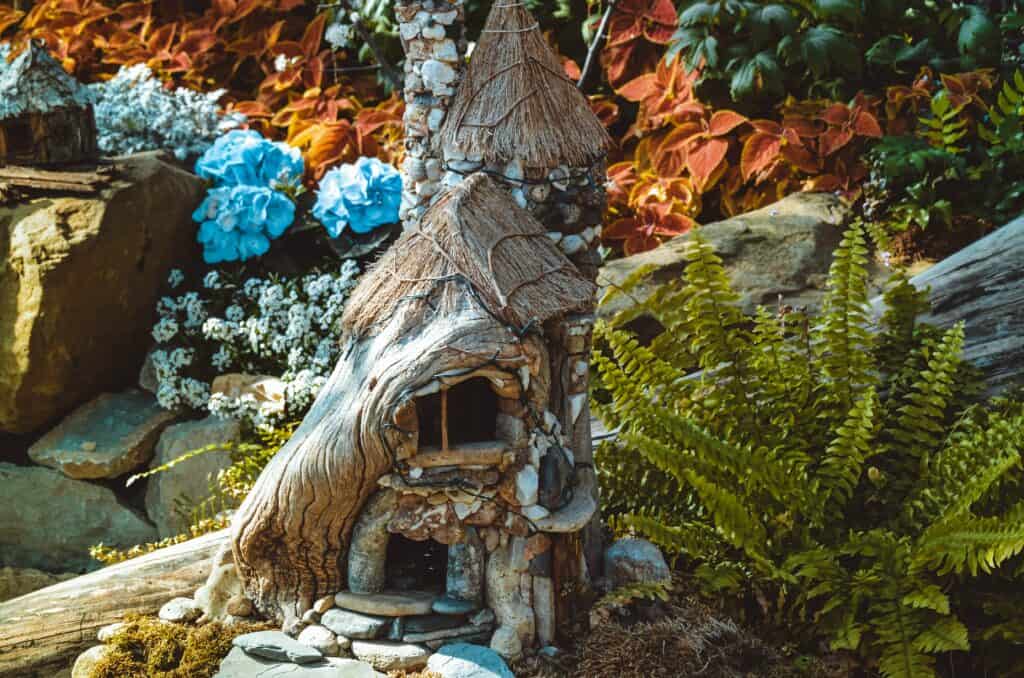
Superstitions Associated with Fairy Trees in Ireland
It is believed that the ‘fairy folk’ had enchanting powers and could outwit humankind whenever wished. They symbolised both a combination of good and evil. The fairy folk could quickly bless someone or cast bad luck over them. They harboured fortune and misfortune, which gained the ‘wee folk’ a lot of respect.
Many people were said to be frightened of upsetting the fae due to the magical powers they had. People also believe that if you cut down or damaged one of the Irish Fairy trees, you would face a lifetime of misfortune.
Irish people take the superstitions of Faerie trees very seriously. Building a motorway was even delayed for over ten years because people didn’t want to harm one of the fairy trees. You can read more about the story of this Irish Fairy tree here.
Some Fairy trees were located on farmers’ land, who went to great lengths to ensure their protection. They would pile boulders around the tree’s base so that no accidental damage would be caused.
It is also said that the fairies are the most excellent protectors of Irish archaeology, which is another reason farmers refuse to remove them. Even if you don’t believe in mythology, it is impossible to deny that the fae folk symbolise ancient Irish history.
Many people were afraid to disturb the trees, so ancient sites near fairy trees have gone untouched for centuries. This leads us to the next section of this article.
Fairy Forts in Ireland
There are hundreds of ‘fairy forts’ still found in Ireland today. Many of the forts have not been disturbed due to the superstitions associated with them. The central myth is that you don’t want to touch the home of the fairies, as they might take revenge on you.
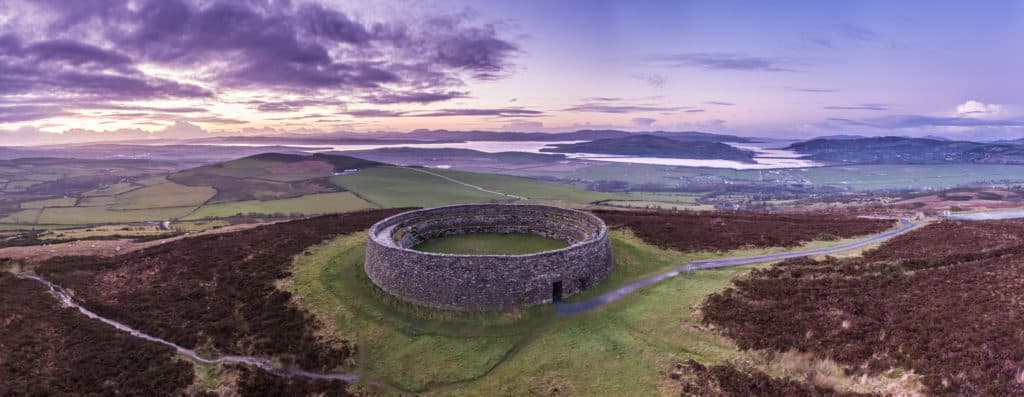
The “Fairy Forts” in Ireland are also known as Ring forts. They are circular, enclosed surroundings covered by an earthen or stone bank.
They were initially designed to protect cows during the night from cattle raiders. Over time, people moved into more open spaces, and it is believed that the fairies made these ring forts in their new homes. This is why Ring forts were given the name “Fairy Forts”.
Fairy Trees in Irish Folklore
Ireland is filled with fascinating folklore stories, but nothing is as enchanting as those associated with the Irish Fairie trees. Even today, folklore stories related to fairy trees are widely discussed.
Irish folklore tells us that Fairy trees are a gateway between two worlds: the mortal world and the Otherworld of fairies. The trees and forts act as entrances from one world to another.
The Fairy Faith
During ancient times in Ireland, there was a thing known as fairy faith, which was the belief in all things fairies. It all started when the Milesians took part in a mythical race in the 11th century, which saw them arriving in Ireland.
The Milesians were Gaels who sailed from Hispania to Ireland after hundreds of years travelling around the earth. The Gaels were originally from Ireland and wanted to return to the home of their ancestors.
When the Milesians arrived in Ireland, they banished the natives to the underground, also known as the Otherworld. These natives were the Tuatha de Danann, Ireland’s most ancient supernatural race (we will discuss them in more detail below).
The native Tuatha de Danann became known as the Sidhe, the fairy folk who lived underground among the trees and bushes.
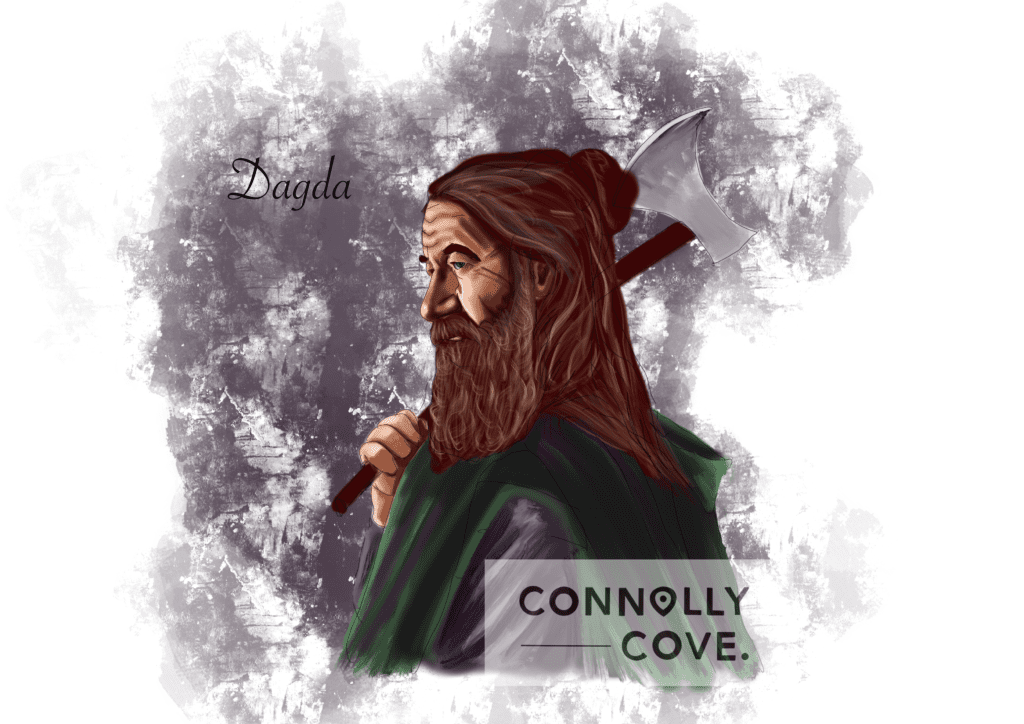
It is believed that the Fairy folk had many ways of getting to the Otherworld. Methods included entering the base of Fairy trees, burial mounds, fairy forts, and even going underwater. These gateways became very important for the fairy folk to quickly move between the two worlds, and so they became protected by the magic powers of the Otherworld.
Where to Find Fairy Trees in Ireland
The great thing about travelling around Ireland is that you will uncover a tale of wonder everywhere you turn. The fairy trees of Ireland are fascinating, and plenty are just waiting to be found.
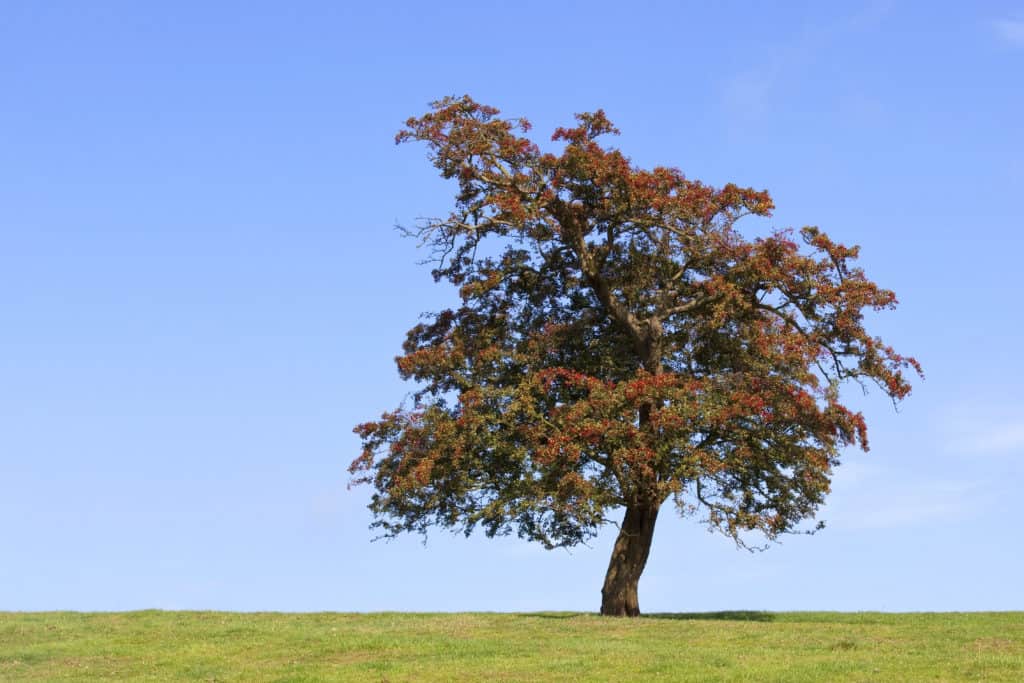
Fairy trees are dotted all over the Irish Countryside. They are easy to spot as they will be alone in a field. Once you recognise a fairy tree, you’ll spot them everywhere in Ireland!
Many fairy trees are found in places of ancient pagan importance, holy sites, and random fields in the countryside. If you wish to find some fairy trees in Ireland, we have some popular suggestions for you to check out:
- The Hill of Tara, located in County Meath
- St. Brigid’s Well, located in County Kildare
- Killary Harbour, located in Connemara
- Ben Bulbin, situated in County Sligo
- Knockainy in County Limerick
These are just a few places to visit to find magical Irish Fairy trees in Ireland. Remember not to disturb the trees; you may even be granted good fortune for respecting them.
Fairy trees in Ireland are unique and full of wonder, but they are not the only trees with exciting folklore. The Celts recognised the importance of trees to their survival, so much so that the tree of life became a common Celtic symbol. Visiting these while you are here will hopefully be a rewarding experience, as they are unique to Ireland.
Decoration of Fairy Trees in Ireland
The decoration of Fairy Trees in Ireland is a charming and deeply rooted tradition that showcases the enduring connection between the Irish people and their folklore. These sacred trees, often ancient and gnarled, are believed to be the dwelling places of fairies or spirits, and they are adorned with various items as a mark of respect and reverence.
Fairy Lights
Fairy lights, also known as “fairy garlands” or “fairy ribbons,” are a common and enchanting way to decorate Fairy Trees in Ireland. These delicate, twinkling strands of lights are carefully wrapped around the branches of the chosen tree, creating a mesmerizing spectacle, especially when lit up during the evening hours.
The use of fairy lights adds an ethereal glow to the tree, symbolizing the presence of the unseen realm. It is believed that the twinkling lights attract fairies’ attention and offer a guiding light for them to navigate the human world. Adorning the Fairy Tree with these lights is seen as a gesture of goodwill and an invitation for blessings and protection from the fairy folk.
Fairy Doors
Another charming aspect of the decoration of Fairy Trees in Ireland is the addition of fairy doors. These miniature, intricately designed doors are often attached to the base of the tree trunk or nestled within the roots.
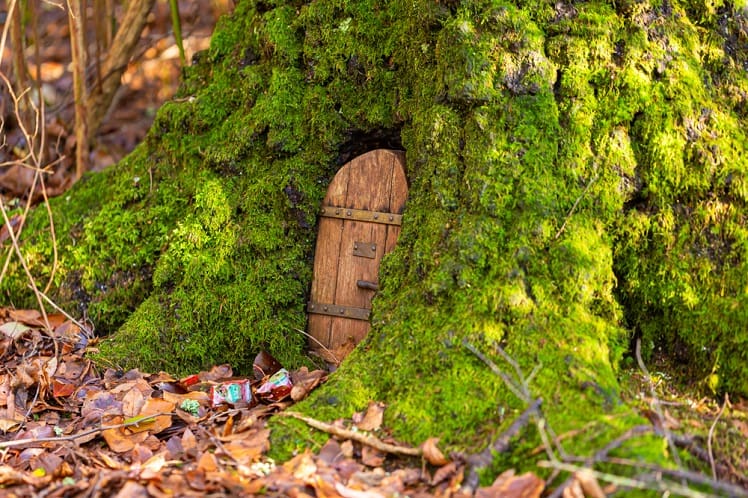
The concept behind these fairy doors is that they serve as portals for the fairies to travel between their hidden world and ours. It is believed that by placing these doors, humans can establish a connection with the fairy realm and offer a welcoming entry point for these mystical beings.
Often adorned with colourful paint, tiny knobs, and intricate carvings, fairy doors are a delightful expression of creativity and imagination. They symbolize the belief in the coexistence of the human and fairy worlds, fostering a sense of wonder and enchantment in those who encounter them.
The decoration of Fairy Trees in Ireland is a captivating tradition that bridges the gap between the physical and the supernatural. The use of fairy lights and doors adds visual splendour and reflects the enduring belief in the presence of fairies and their significance in Irish folklore.
Fairy Trails in Ireland and Northern Ireland
Fairy trails, often called “fairy paths” or “fairy walks,” are enchanting and whimsical pathways that wind through natural landscapes, forests, and parklands in Ireland and Northern Ireland. These trails are believed to be the routes fairies take as they move through the mystical and hidden realms of the countryside.
Along these paths, visitors may encounter fairy-related decorations, such as fairy doors, miniature houses, and whimsical sculptures, all of which symbolise the fairy folk’s presence.
Fairy trails have gained popularity in recent years, not only as a means of exploring the natural beauty of the Emerald Isle but also as a way to immerse oneself in the captivating world of Irish folklore and mythology.
The Significance of Fairy Trails
Fairy trails hold immense significance in Irish culture, rooted in the deep-seated belief in the fairy folk and the otherworldly. These trails offer a tangible connection to the enchanting stories of fairies passed down through generations.
For locals and tourists alike, exploring fairy trails provides an opportunity to engage with the rich history of Irish mythology and folklore. Additionally, these trails invite a sense of wonder as visitors embark on a journey to seek out the hidden and ethereal world of the fairies.
Beyond their cultural and mythical significance, fairy trails also promote environmental conservation, encouraging people to appreciate and respect the natural beauty of the Irish landscape.
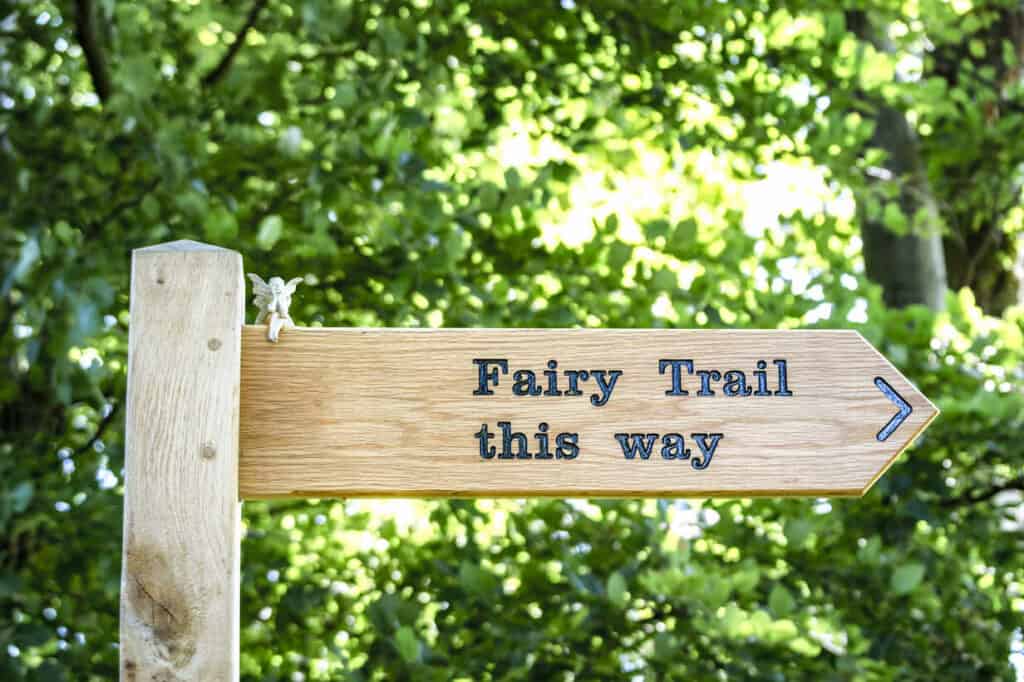
Popular Fairy Trails
Across Ireland, numerous fairy trails attract tourists and locals seeking to immerse themselves in the enchanting world of fairies. One such trail is the “Glenbower Wood Fairy Trail” in County Cork, which winds through a lush forest and features delightful fairy doors and sculptures nestled among the trees.
In County Clare, the “Dromore Wood Nature Reserve Fairy Trail” invites visitors to explore a tranquil woodland adorned with whimsical fairy houses and magical surprises at every turn.
In Northern Ireland, the “Glenariff Forest Park Fairy Trail” within the Glens of Antrim is famous. This trail meanders along the Glenariff River, leading visitors past hidden fairy homes, stone circles, and serene waterfalls.
The “Rostrevor Fairy Glen” in County Down is another enchanting location. Visitors can follow a winding path through a moss-covered forest, encountering fairy doors, sculptures, and charming picnic spots along the route.
These trails serve as a testament to the enduring belief in fairies and the desire to connect with the magical and mystical aspects of the land. Whether for cultural enrichment or simply for the joy of exploration, fairy trails provide an enchanting journey into the heart of Ireland’s captivating past and present.
Origin of Fairies
In Celtic Ireland, fairies are believed to have descended from the ancient race of supernatural deities, the Tuatha de Danann. Our fully comprehensive article on the Tuatha de Danann describes its most influential members.
Notable members include:
- Danu, the mother Goddess
- Dagda, the Good God
- Bridgit, the Goddess of fire and light
- The Goddesses of war
- King Nuada of the Silver Arm
We also cover the origin of the Tuatha de Danann, their most magical treasures, their most wondrous stories and finally, the ultimate fate of the tribe of Danu.
The history of the Tuatha de Danann is fascinating. For example, did you know that one of its members remained above ground and became a saint in Catholic Ireland according to the mythology?
The Tuatha de Danann were conquered by the mortal tribe known as the Milesians. After the battle, the Milesians remained above ground while the Tuatha de Danann retreated underground through borrows, hills and burial grounds called ‘Sidhe’.
After many generations, ancient Ireland’s Celtic Gods and Goddesses were now known as the ‘Sidhe’, ‘People of the Sidhe’ or ‘Aos sí’ and became the fairly folk we know today.
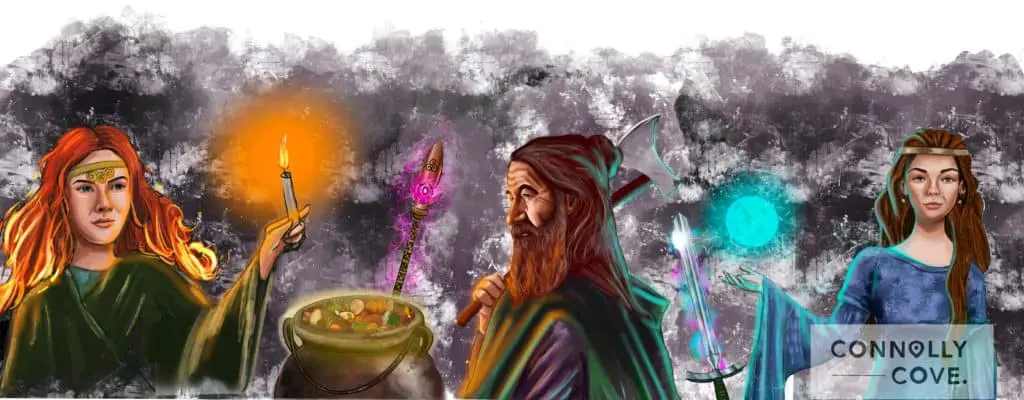
Types of Fairies
Aos Sí
As previously mentioned, the Aos sí are descendants of the Tuatha de Danann. They are human-sized, beautiful, intelligent, creative and in tune with nature. They value the arts, especially music and reading.
They are mysterious; we know a lot about the Tuatha de Danann, the ancestors of the Aos Sí, but much of what happened to them after they went underground is unknown.
Solitary Fairies
Solitary fairies are the fairies who do not live together like the Aos sí. They often avoid human interaction, coming out at night time. Many different types of fairies are found in this classification. Many mythological monsters in Irish folklore fall under the classification of solitary fairies. These are the fairies that you imagine when you think of fairy trees.
Banshee
The first of these solitary fairies is the banshee, a female death-messenger. When someone dies, the banshee is often the first notice given to family members that a loved one has passed away.
Her shriek crying is instantly recognisable and a definitive sign that death has occurred. In Irish mythology, Morrigan, the Goddess of war and death and a member of the Tuatha de Danann, was often confused with the banshee. This is because, in folklore, they have both been depicted washing the armour of a hero who would die in their next battle.
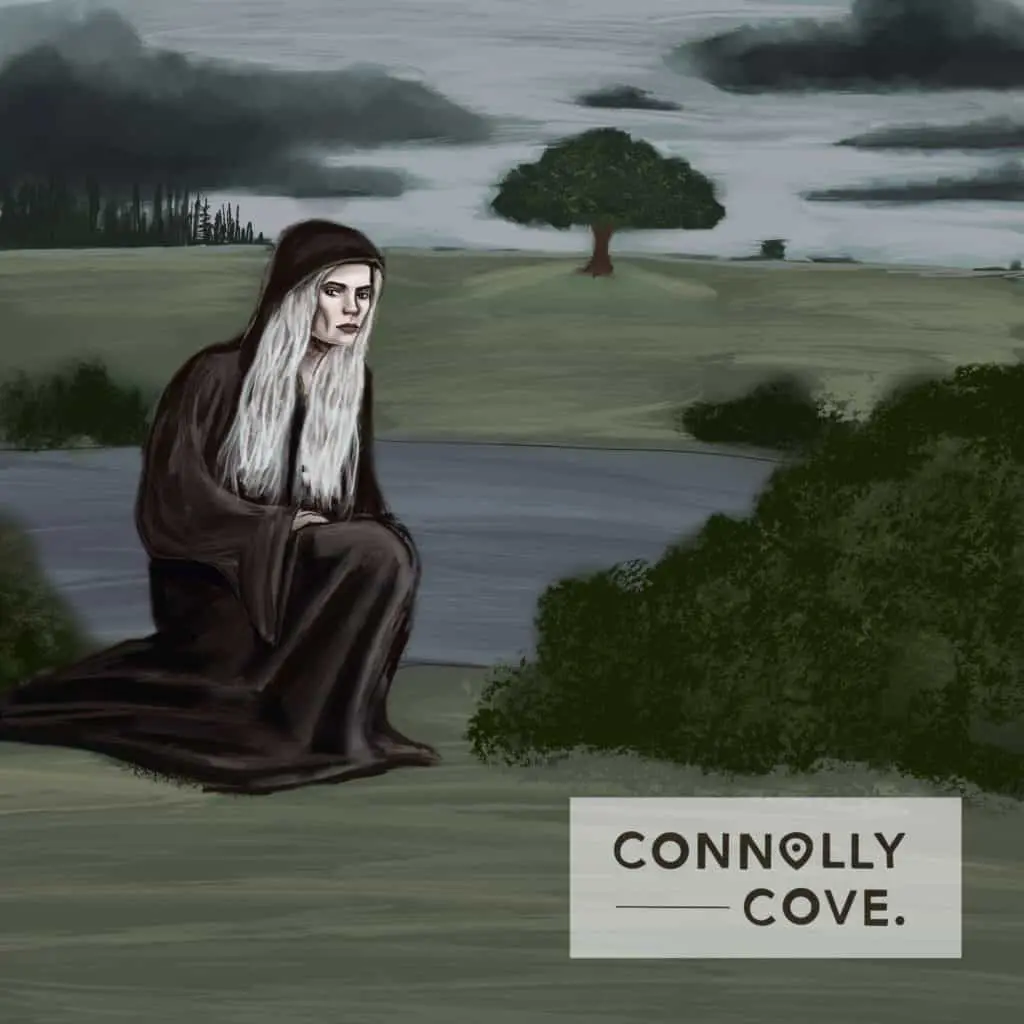
Leprechaun
The leprechaun and its lesser-known but more mischievous counterparts, the Fearr Dearg and Cluricaune, are up next. They are tiny creatures usually depicted as bearded men.
The leprechaun’s greatest passion is shoemaking. Depending on the tale you read, they can appear as kind or mischievous, but they are usually anti-social creatures. Unless provoked by humans, they prefer to spend their time alone making shoes. The Cluricaune is more focused on drinking stout and ale, however. They can be found haunting breweries.
The Fear Dearg are named after their red coats and hats (Dearg means ‘red’ in Irish, and Fearr means ‘man’). They are also called rat boys due to their hairy skin, tail and long snout. They are the most mischievous of all three creatures and actively involve themselves in practical jokes that can be dangerous for the unfortunate humans that cross their path.
They are known to swap babies with changelings, hairy creatures who take an identical human appearance when the natural person has been taken.
Changelings
A changeling was a fairy that replaced a human, usually a child. The changeling could make their appearance nearly identical to the stolen person. Only through the unusual behaviours the changeling showed when they thought they were alone would their true nature be revealed.
Changelings appear throughout European mythology. Their origin, motives, traits and abilities vary from story to story, but the good news is that there is usually a way to recover the missing child from the fairy people. Good fairies sometimes return the child to its parents before they even realise they were swapped.
Dullahan – Headless Horsemen
Another solitary fairy is the Dullahan or headless horseman. In mythology, he is an evil figure who calls out people’s names, only for them to die instantly. In other myths, a person would die if his horse stopped moving.
The headless horseman has appeared in Irish, Scottish and American mythology as a vengeful spirit that should be avoided at all costs. In some myths, wearing gold would protect people from the Horseman.
The Celtic Tree of Life
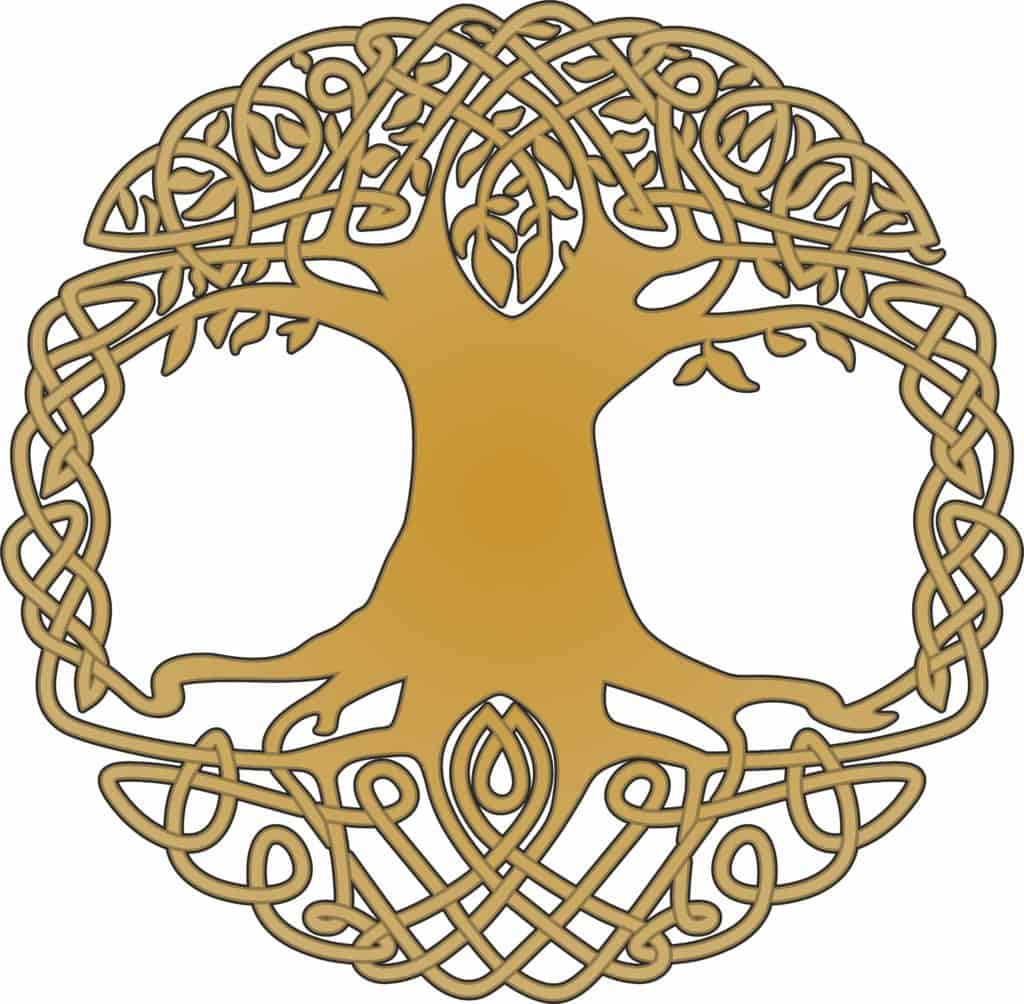
Another vital tree in Irish folklore is the Celtic Tree of Life. When the Celts used to clear vast fields for settlement purposes, they always left one tree alone in the centre. They respected trees’ role in nature, providing food and shelter to animals and humans alike.
This single tree would become the Tree of Life, which the Celts believed possessed supernatural powers. The greatest triumph one would have against their enemy was to chop their tree down. It was considered the most offensive act to do to your enemy, as the tree was sacred.
Druids often practised rituals under these trees. Druids were high-ranking figures in ancient society, fulfilling the religious leader, doctor, and judge role. Unfortunately, druids left very little written information behind. Trees symbolise the circle of life, dying each winter only to bloom again in spring.
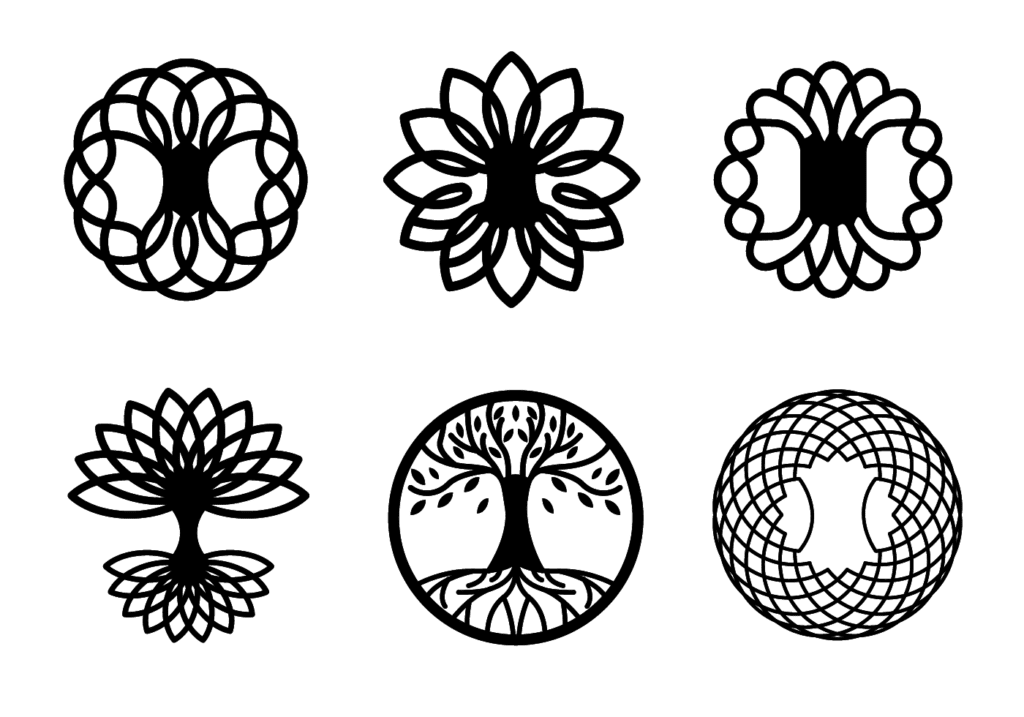
The Tree of Life represented the interconnectivity of everything in nature and the connection of our world with the Otherworld. The Otherworld was a supernatural place which belonged to deities and the dead.
Celtic cultures believed that trees’ roots connected our world with the Otherworld. Trees were seen as doorways to the spirit world. Thus, they were magical, as they protected the land from evil spirits and hindered their entrance into our world. They acted as both a door for fairies and a barrier for evil spirits.
In particular, the barrier to the Otherworld was weakened one night. This night became the festival of Samhain and has now transformed into modern-day Halloween. Why not read our article about Halloween traditions throughout the years to learn more?
There are so many unique designs for the Celtic Tree of Life artwork, but in general, the roots and branches of the tree form to create an aesthetic and cohesive circular design.
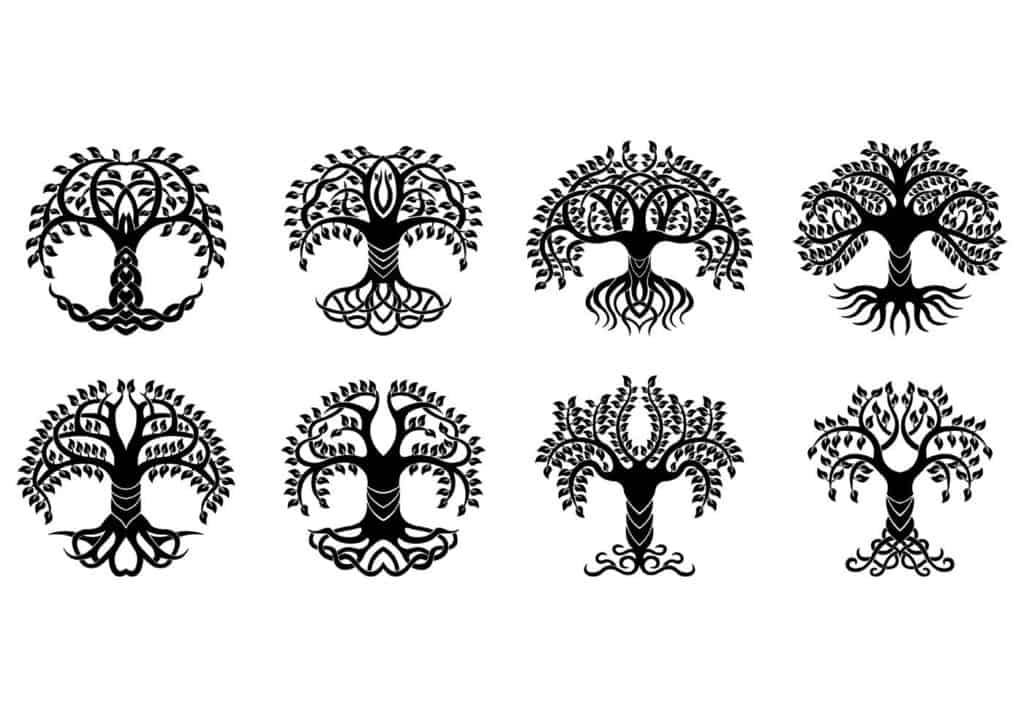
It makes sense that the Celts created fairy trees. Their custom of leaving a tree in the centre of fields to honour the circle of life created the mysterious lone fairy tree we know today. Of course, this is only one of many theories, but it makes perfect sense. What do you think?
The Interesting History of Hawthorn Trees
As we have already covered, the Hawthorn tree has a rich history in Irish folklore. The Celts believed they were sacred and always left one in the centre of a field they were clearing as a sign of respect. This would create the curious myth of fairy trees in Ireland and the reverence around them that still exists today.
It was considered terrible luck to cut down a fairy tree, and it is unheard of to disturb one. Even if people are less likely to believe in the myth of fairy trees today, they will not take the chance of cutting them down.
People also like to preserve the history of the trees in their area. Many Irish people grew up listening to their parents and grandparents telling stories and reminiscing about the magical trees. If nothing else, they are nostalgic and remind us of simpler times.
The only time people could interact with the tree without evoking the phantom of the faeries was during Beltane, an ancient Celtic festival in Spring. During this time, people could also respectfully take the hawthorn flowers from the tree. The sacred flower symbolised love and unity; brides wore them in their hair or bouquets.
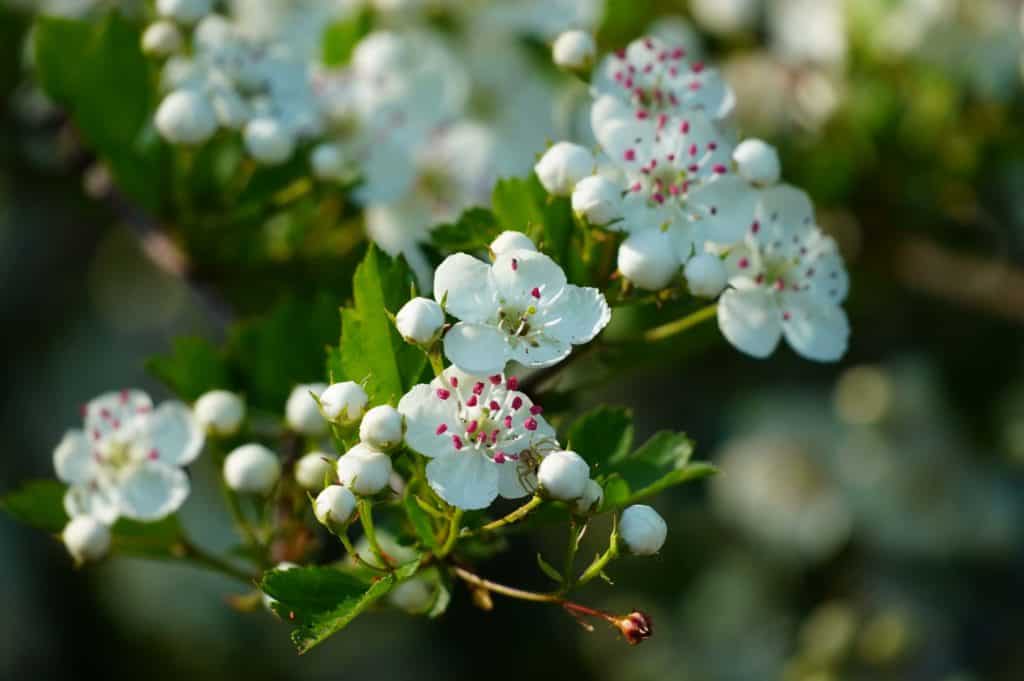
Ash Trees and Their Role in Irish Folklore
As you now know, Ash trees are also Fairy trees. However, ash trees are also used to make hurleys, and sticks are used to play a traditional GAA sport called hurling. In our ultimate guide to Irish traditions, you can learn about the sport, which has featured in much of Irish folklore (including The Legend of Cú Chulainn).
This is interesting because we have already discussed that fairy trees are sacred and that it is considered extremely bad luck to cut one down. However, we must remember what fits the criteria of a fairy tree.
While all fairy trees are Hawthorn or Ash trees, not all Hawthorn and Ash trees are considered fairy trees. This is because the tree’s location determines whether it is a fairy dwelling.
Fairy trees are only found in the centre of fields; Ash trees for hurleys or hurls are purposely grown to make the iconic stick. Ash is used in particular for the wood’s natural strength, flexibility, lightness and shock absorption qualities.
Players are very connected to their own Hurley. Each hurl is unique, as skilled artisans make them with their methods. Hurls can break during matches (known as a ‘clash of the ash’), but players are often reluctant to replace their stick with a new one.
Unfortunately, a disease in the ash tree has caused a shortage of wood for hurls. Many players are now forced to use synthetic wood and even bamboo as a replacements. This has made the surviving ash hurls even more special as they are becoming rare.
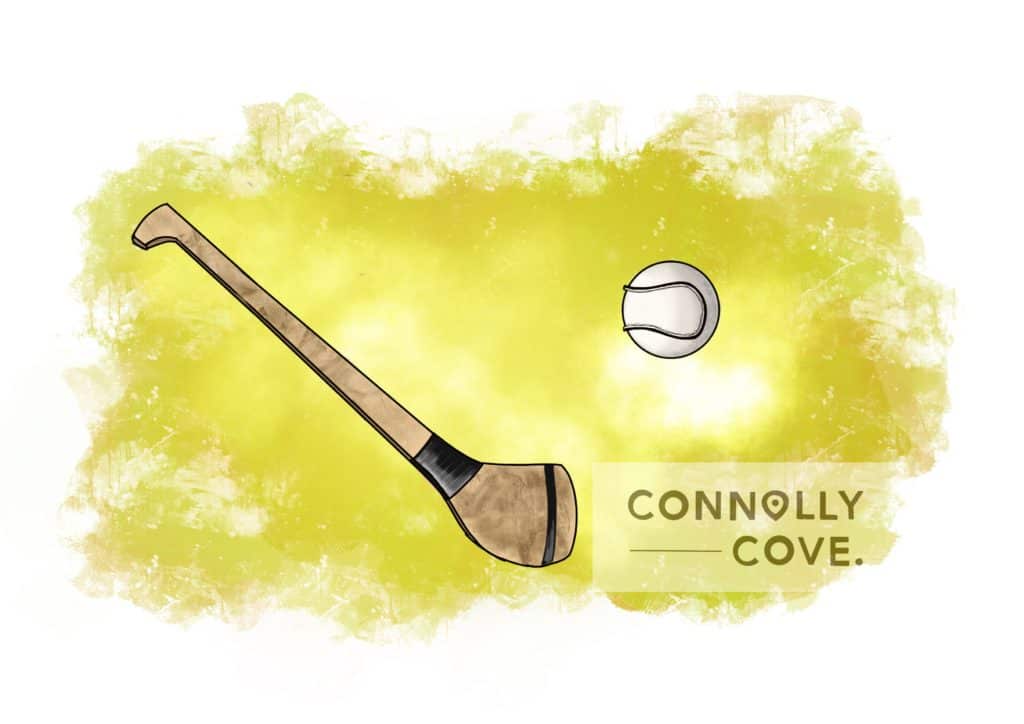
Note: Spellings of Fairy Trees in Ireland
There are many different spellings of the word fairy, such as faerie, faery, fay, etc. In this article, we used these words interchangeably!
The superstition surrounding fairy forts has helped to preserve many archaeological sites around Ireland. While you may not see a fairy in a tree, plenty of fairy trees are scattered around the country!
Frequently Asked Questions:
What Tree is Known as the Fairy Tree? / What Does a Fairy Tree Look Like?
Fairy trees in Ireland are Hawthorn trees or Ash trees. What makes these Irish Fairy trees different from other trees is their location. They stand alone in the centre of the field, usually with large stone circles surrounding their base.
Why do Fairy Trees Stand Alone in the Centre of a Field?
Another vital tree in Irish folklore is the Celtic Tree of Life. When the Celts used to clear vast fields for settlement purposes, they would leave one tree standing alone in the centre of the field as they respected trees’ role in life and nature. Hundreds of years later, the origin of these trees would be speculated to be the property of the fairy folk.
What are Fairy Trees?
Fairy Trees are also known as Hawthorn or Ash Trees in Ireland. What makes these Irish Fairy trees different from other trees is their location; Fairy Trees are often found standing alone in the middle of a field.
Are Hawthorn Trees Fairy Trees?
The Hawthorn and Ash trees are known as fairy trees. The Hawthorn tree is also associated with Beltane, an ancient Celtic festival in Spring. It was considered a sacred tree, a symbol of love and protection and was not to be disturbed.
Are Hawthorn Trees Lucky?
There are two sides to this answer. It is considered bad luck to cut a Hawthorn fairy tree down or to disturb the tree in any way which may alert the fairies. However, the tree is a Celtic symbol of love and protection.
During Beltane, the Celtic festival of spring, people were permitted to hang things on the tree and collect flowers from the tree. In the past, it was a tradition for brides to put Hawthorn flowers or bouquets in their hair to symbolise their union of love.
Are Fairy Trees Real?
Yes! Fairy trees, also known as Hawthorn or Ash trees, are found scattered throughout Ireland.
Are there any Fairy Trees in Northern Ireland?
There are many fairy trees found throughout Northern Ireland. You never have to go too far to find a fairy tree on the island of Ireland. You just need to know how to find them. After reading our article, you’ll understand what a fairy tree is and how to spot one. They are most prominent in the countryside.
Is it Unlucky to Cut Down a Hawthorn Tree?
Yes, it was considered terrible luck to cut down a Hawthorn tree. A few generations ago, people would take a more extended route home at night to avoid passing a fairy tree. Even today, fairy trees still stand tall in the centre of fields.
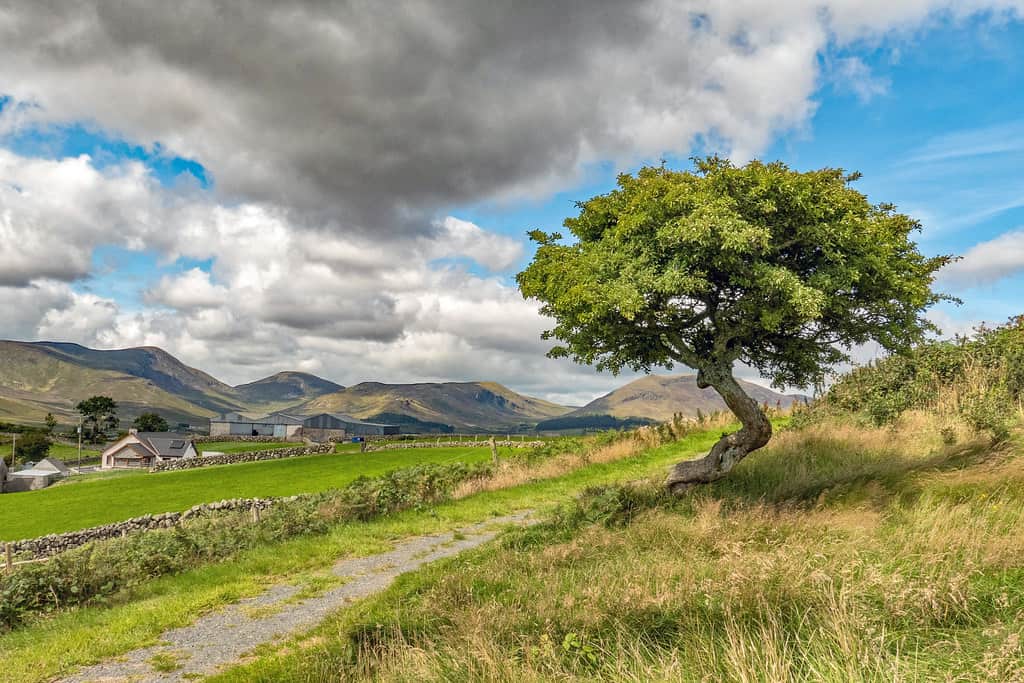
Fairy Trees are a Whimsical Aspect of Irish Folklore
The fairy tree story tells us more than one may think about Irish customs and beliefs throughout history. There is always something you can learn by looking into the past. At Connolly Cove, you can read about the history of Ireland and the best Irish travel guides available online!
Have you seen any fairy trees in Ireland? We would love to hear about your stories and experiences below!
Have you enjoyed our article on Irish fairy folklore? If so, other worthy reads that might interest you include:
Fairy Glens| Curious Case of Irish Curses | Finest Legends and Tales of Irish Mythology| Digging into the Secrets of Irish Pookas| Interesting Facts about the Irish Legend of the Children of Lir| Insight into the Irish Wake and Superstitions Associated with it|



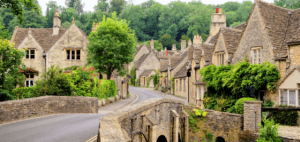
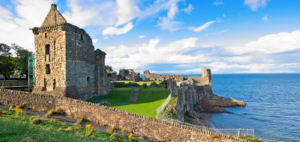


They are cutting two old dying hawthorn s down in England where I live ,is there anything we can do to reduce the bad luck,any ritual